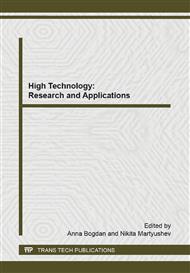p.898
p.903
p.907
p.912
p.917
p.923
p.928
p.933
p.937
Principal Indicators for Efficiency Assessment of Resource Management in Foundry Production
Abstract:
The article gives a short target analysis of efficiency assessment as applied to casting techniques. Basic principles of efficiency assessment are defined. Efficiency criteria are proposed to optimize and quantify the efficiency of various prospective and existing foundry technologies. Functional, energy and resource criteria are selected as prime criteria. However, as shown in the article, energy criteria are the most common for comparison and assessment of manufacturing practices. The article reflects the fact that consumption of electrical, mechanical and other kinds of energy in socially-relevant production may be highlighted as an important indicator of technification in modern society development. The study leads us to the conclusion that the most common indicator of technification of any kind (social, informational, manufacturing, etc) is the efficient use of social time.
Info:
Periodical:
Pages:
917-920
Citation:
Online since:
September 2014
Price:
Сopyright:
© 2014 Trans Tech Publications Ltd. All Rights Reserved
Share:
Citation:


